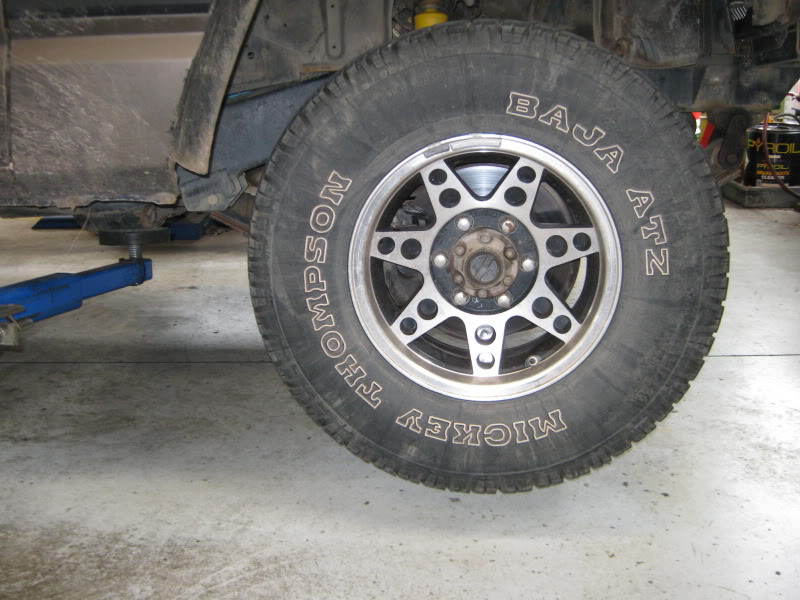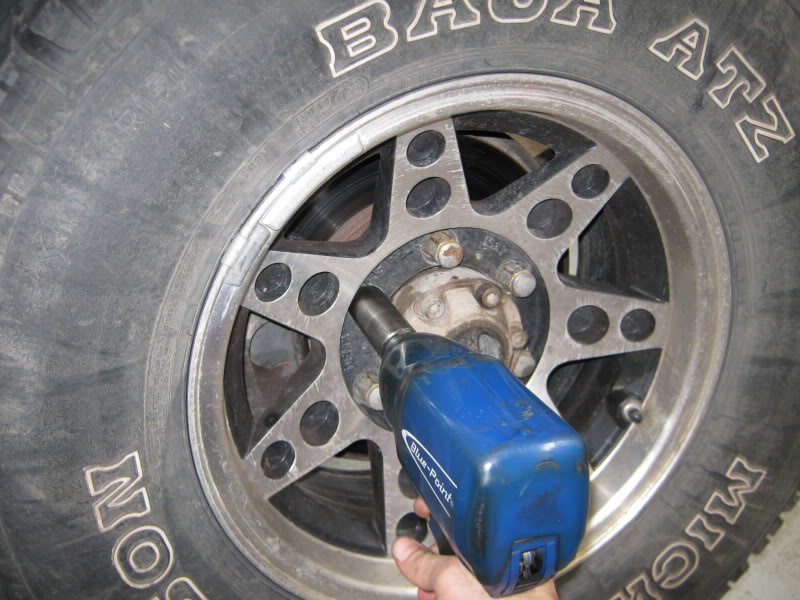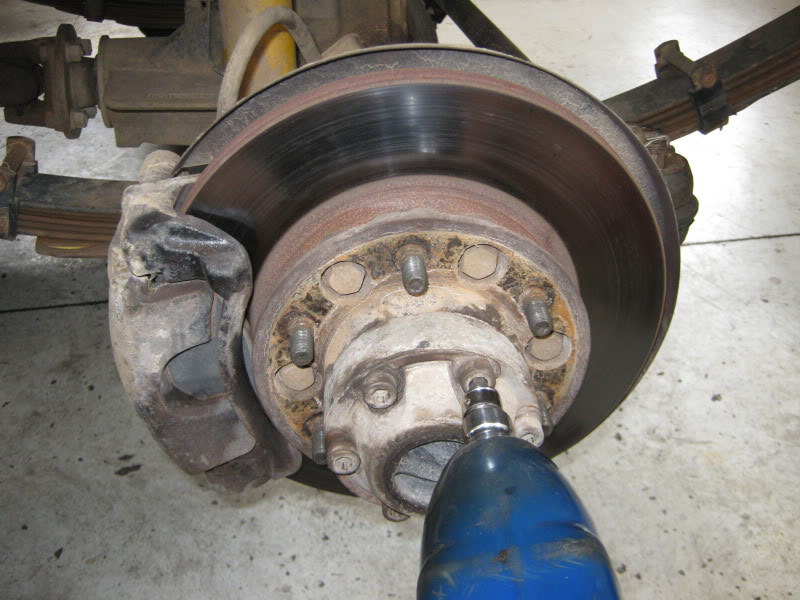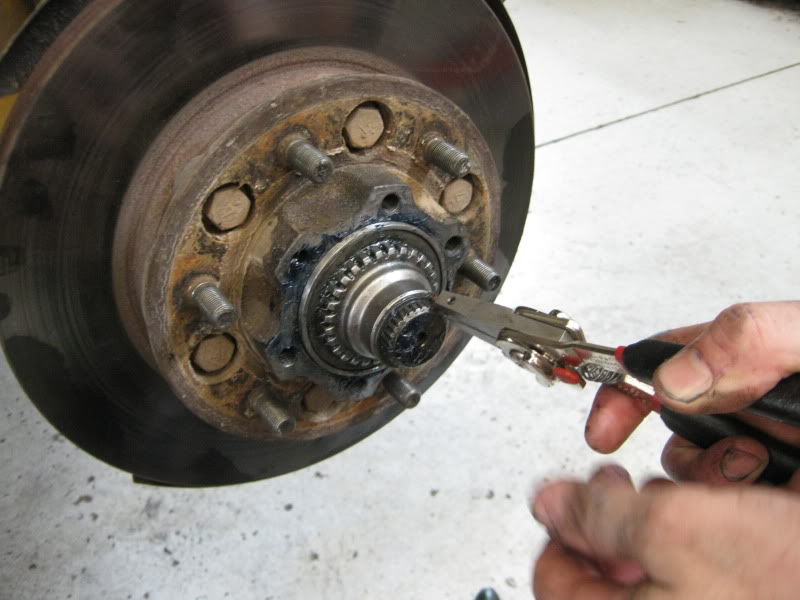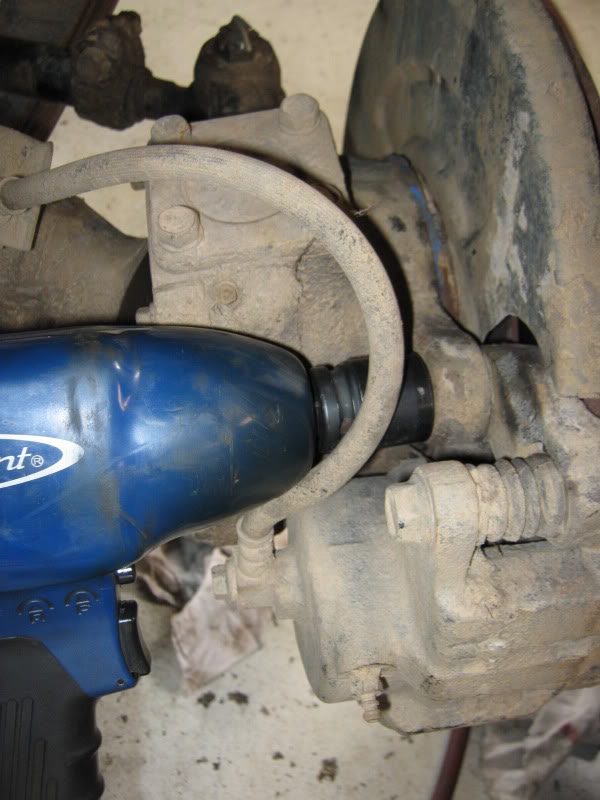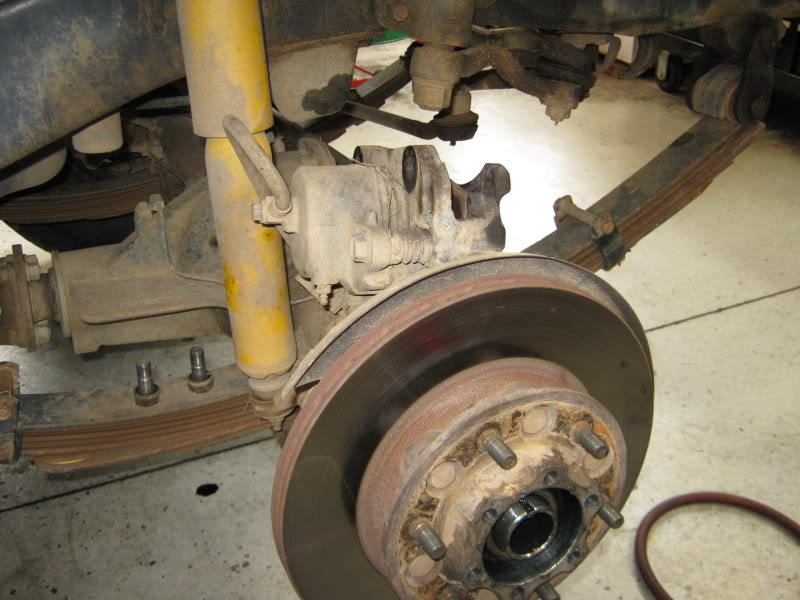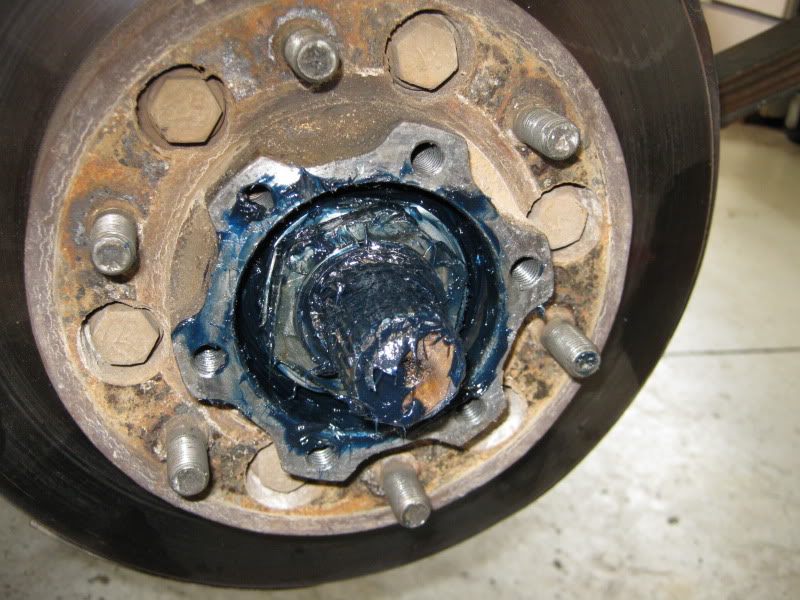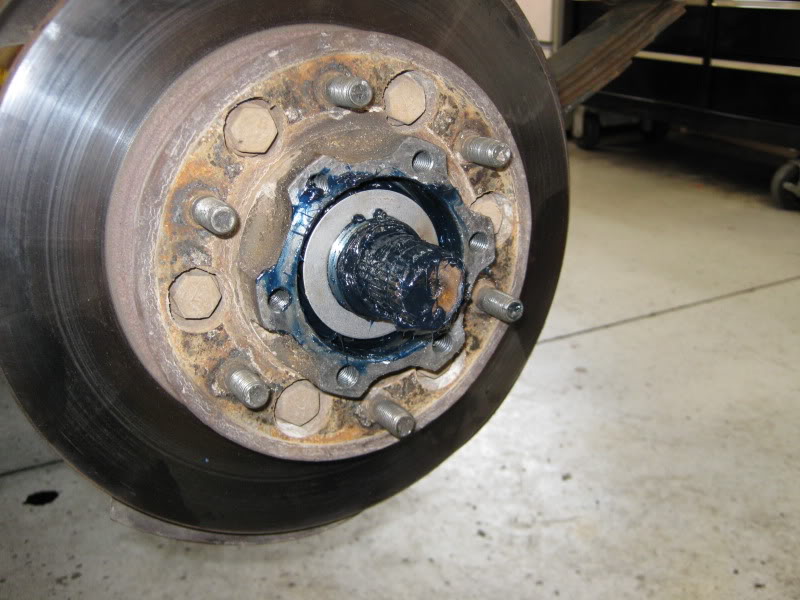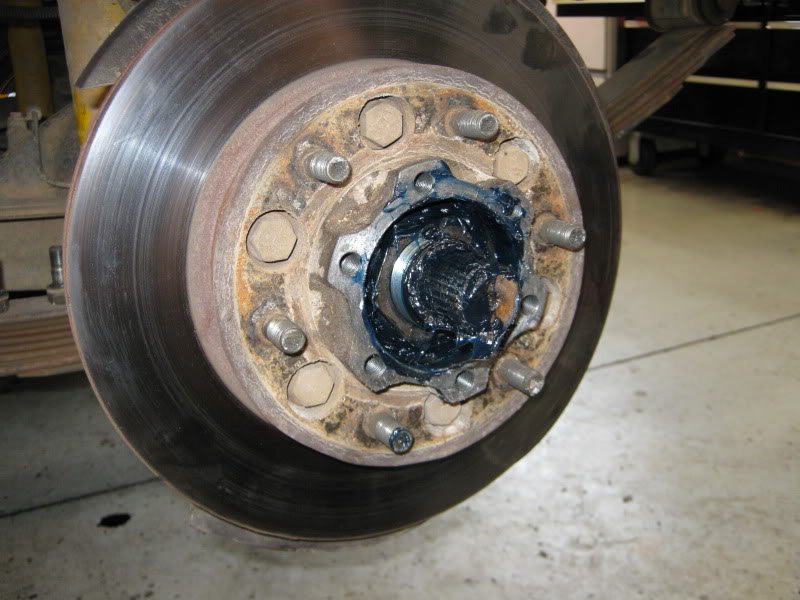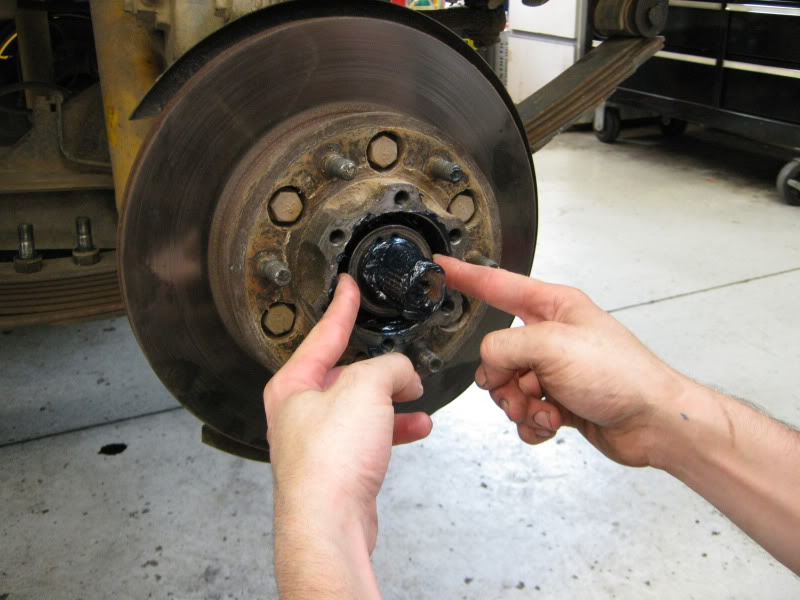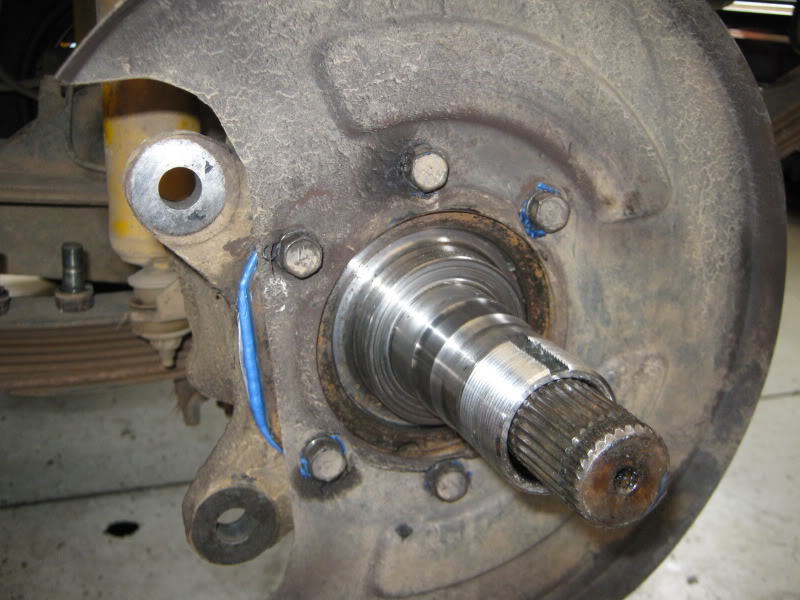Front Diff Rebuild - Stage 1 (Wheel Bearings)
-
Tagged with:
- Differential
Table of Contents
This wiki page is part of a ‘series’ on rebuilding the front diff. Also see Stage 2 (Swivel Hubs), Stage 3 (CV) and Stage 4 (Diff Centre).
This guide is not exhaustive and should be read in conjunction with the relevant section of the Service Manuals such as MQ Service Manual (1980) - Chapter 14 - Front Axle.
It is possible to upgrade the bendable lock-washer referred to below with the version from the GU Patrol. Please refer to this wiki page.
Pictures were supplied by Patrol4x4 user dattopimp in this thread: http://www.patrol4x4.com/forum/nissan-patrol-mq-mk-12/cv-wheel-bearing-replacement-warning-alot-pics-45874/
Remove
Replace & Repair
At this stage, it is also possible to replace the brake discs. If you intend to only repack your existing bearings, skip the steps regarding the bearing cups.
| Step | Info | Photo |
|---|---|---|
| 11 | From the back of the hub, remove the seal (lever out with a screwdriver or similar device). | 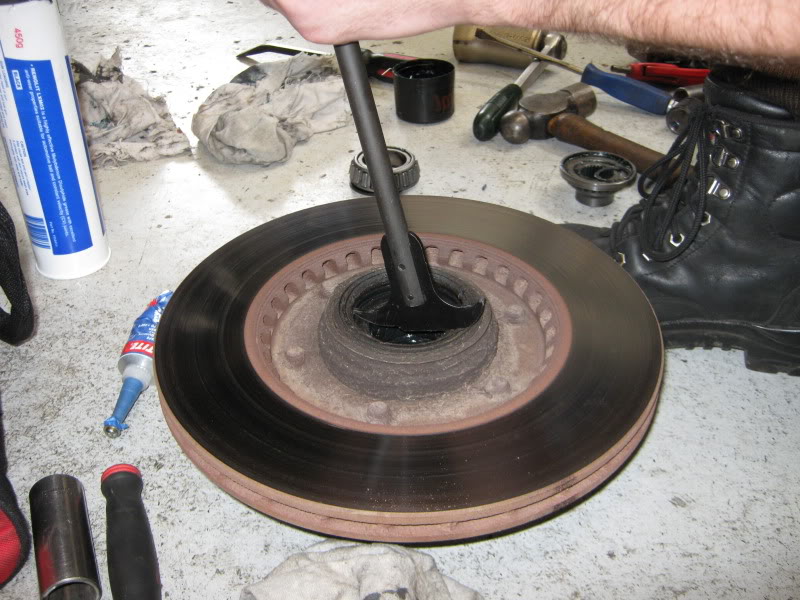 |
| 12 | Remove the bearings. | - |
| 13 | From the back of the hub, use a suitable punch/cold chisel and hammer out the small ‘front’ bearing cup. There are 2 notches in the hub that the chisel can strike through. | - |
| 14 | From the front of the hub, use a suitable punch/cold chisel and hammer out the large ‘rear’ bearing cup. There are 2 notches in the hub that the chisel can strike through. | - |
| 15 | Clean all the old grease out of the hub. | - |
| 16 | Carefully insert the new bearing cups, with the smaller opening of the cup inserted first. Tips at bottom1 | - |
| 17 | Pack the bearings with grease. | 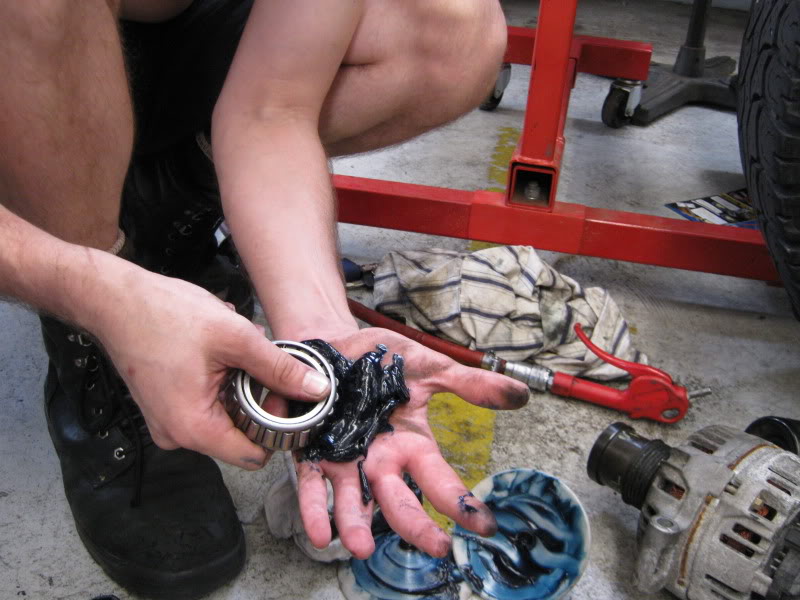 |
| 18 | Insert the bearings into the hub. | - |
| 19 | Insert the seal to the back of the hub. | 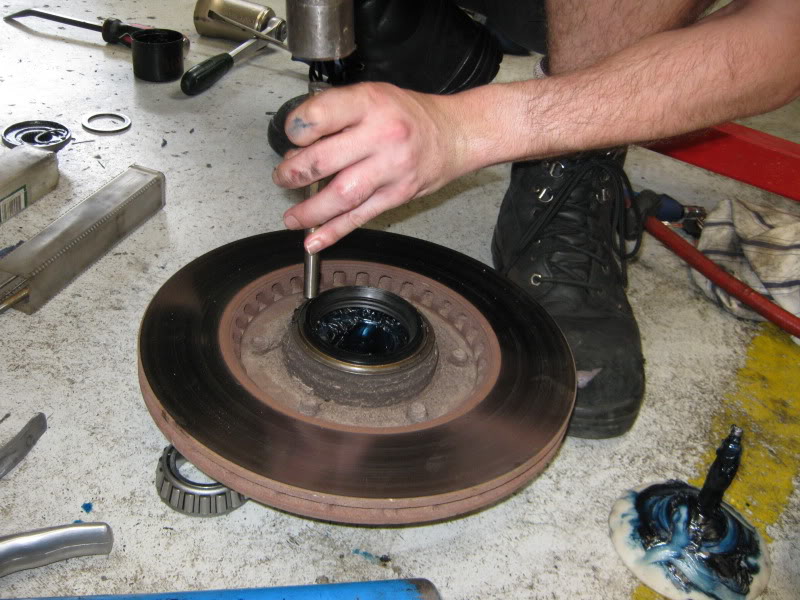 |
Assemble
- The bearing cups are a press fit and will require hammering in. Ensure you do not damage the tapered face that the bearing rolls on. One effective method is to use the old bearing cup and place the small opening of the old cup onto the large opening of the new cup. Then strike the old cup with a hammer so that it drives down the new cup. When the new cup is fully seated, the old cup can be knocked out from the other side of the hub, striking its exposed ‘lip’. This way, only the old cup is damaged. [return]
